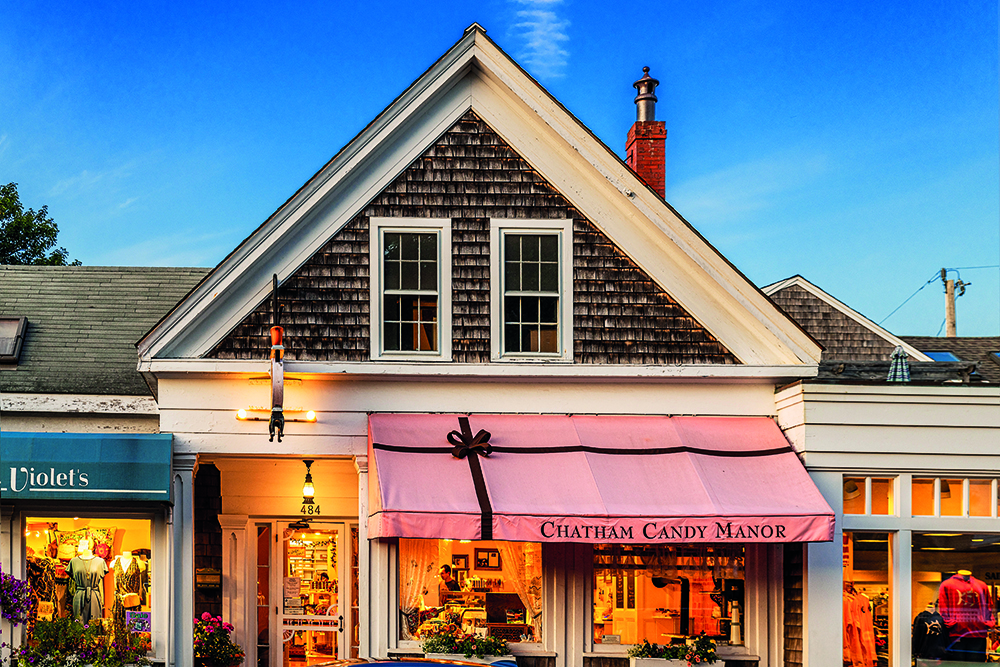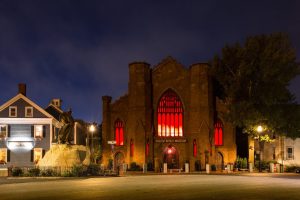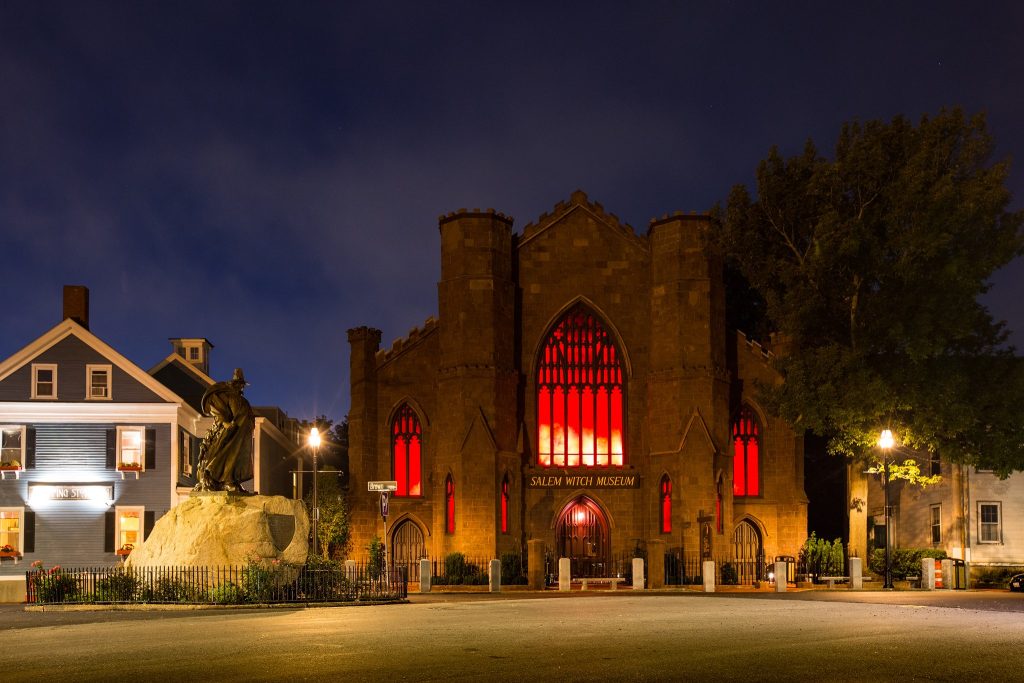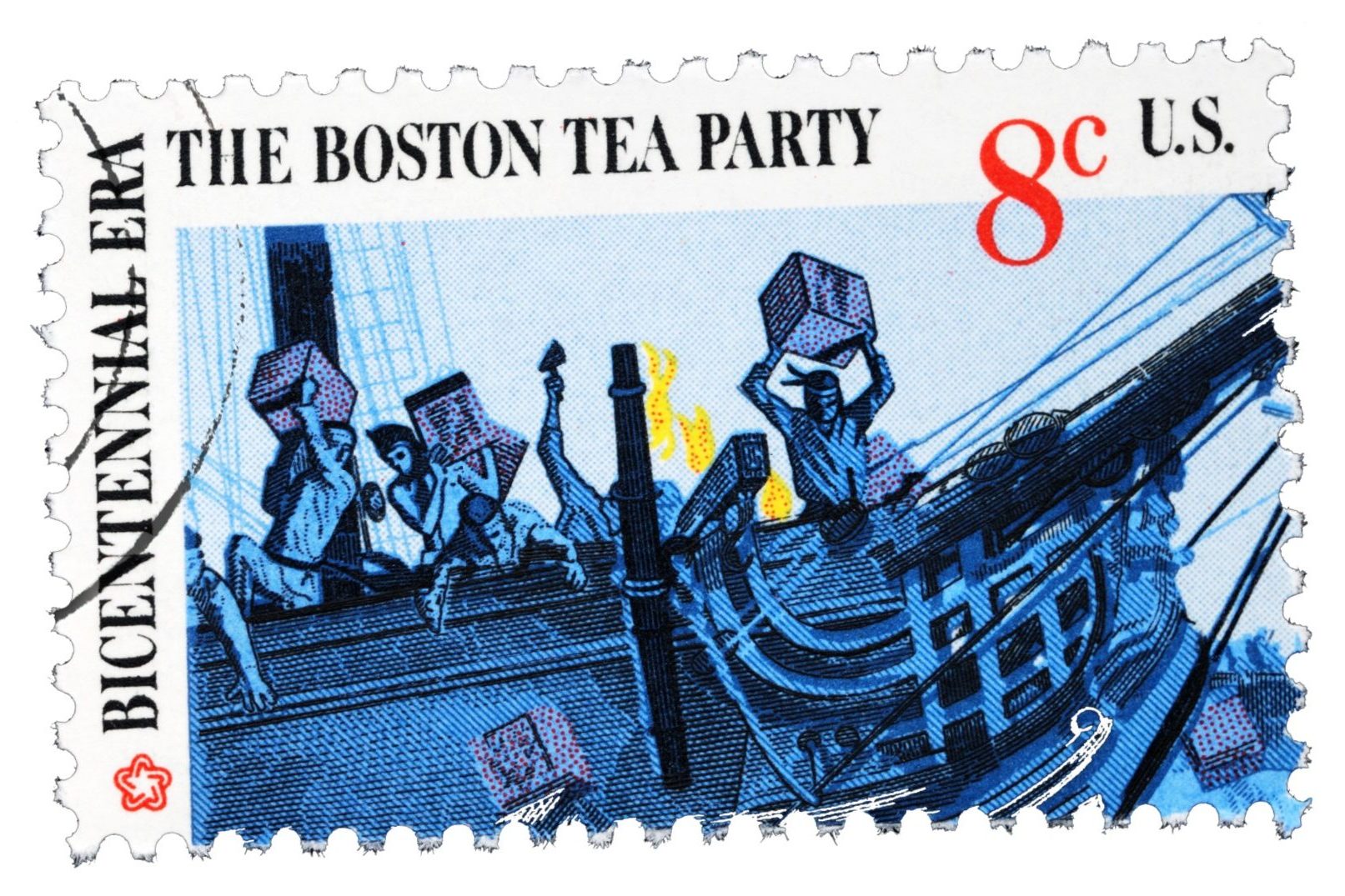This article is in The Spectator’s February 2020 US edition. Subscribe here.
The pretty, preppy town of Chatham, Massachusetts sits more or less at the elbow of Cape Cod, just after the swollen bicep of Hyannis and just before the Cape’s forearm tapers upward to Wellfleet’s freshly disembedded oysters, Truro’s schools of Subaru station wagons and Provincetown’s shallow-swimming shoals of gays.
People who’ve never seen the Cape assume that it’s universally charming in an Olde Newe Englande sort of way: shingled houses and lobstermen, homely pubs with whaling paraphernalia on the walls and yellowed photos of Norman Mailer behind the bar. But, like any 340-square-mile place, it’s multifarious. Every picture-postcard town is twinned with one of strip malls, miniature golf and motor lodges.
Chatham, though, never drops its postcard pose. A Main Street of stout, proper shopfronts dispenses antiques, nautical art, books, ice cream, artisanal candy from a shop whose pink awning is tied with a faux bow, and heavyweight crew-neck sweatshirts with block capitals saying CHATHAM — the sort that a shop in every beach town should purvey but which too few do. The oversized letters help aging tourists remember where they are.
Some call Chatham slightly precious, too sure of its own perfection. They have a point. Orleans, the more rural, more ramshackle town just north, is the connoisseur’s choice. It’s also far superior for beaches. Chatham’s beaches are on bays and coves and inlets — fine enough for a quiet bath in warm water, but no match for the thrilling waves of Orleans’s Nauset Beach, a 10-mile spread of dunes fronting the Atlantic. At Nauset, the next stop is Portugal, not a sandbar. Thoreau wasn’t wrong about everything; his description of what was then named Outer Beach is near-perfect: ‘A man may stand there and put all America behind him.’
When I was a child, Nauset Beach had a snack shack with justifiably famed onion rings. The menu at Liam’s was not vainglorious in avowing that its rings weren’t ‘really onions, or rings, or food’, but ‘sacraments’. Put another way, they are drip paintings of greasy joy, every ring a deep-fried Jackson Pollock. Or they were, until Liam’s closed in 2017, its building the victim of almost 30 years of meteorological abuse. I had to learn that on the internet, for I didn’t make it to Nauset this time. I never left Chatham, because friends were being married. Bride and groom were ferried from church to reception Chatham-style, by skiff.
In the watery light of a crapulous dawn I began the interminable drive back to New York. Massachusetts Route 6, the Mid-Cape Highway, is the only road running the length of the landmass. At two lanes, it’s not exactly a highway. Exiting in the Lower Cape, I proceeded into the Cape’s netherworld via a rotary, one of those Dantean circles of controlled chaos devised to punish Massachusetts drivers for their refusal to indicate before turning. Pulling into the gas station in Dennis, part of a long strip of fast-food outlets and chain stores, I could have been anywhere in America. Only the sandy soil gave the location away.
I cast off with a Volvo full of gas, hoping to make it back to New York by noon. It was smooth sailing till New Bedford, the old whaling town linked in postindustrial misery with nearby Fall River. An unsmiling, familiar and not entirely welcome face greeted me on a billboard. Several miles passed before I remembered where I’d seen it. It belonged to one of New England’s most successful personal-injury lawyers, and I’d once crashed a party at his waterfront mansion in Newport, Rhode Island.
The house was the major draw, a bipolar McKim, Mead & White fantasia from 1891, with a fortress-like north façade of stone contrasting with a winged, columned portico at the entryway. Had I but possessed a limpid state of mind, I would have mentally photographed it. Memories of the party are muddy, as I’d personally injured myself with the mixture: an architecturally minded friend noting that the ceiling molding in a parlor was ‘not at all right’, a soft-shoed pantry raid for chips, a new acquaintance of Irish-American stock dubiously claiming that ‘to the Irish, Oliver Cromwell is the most evil man who ever lived, more evil than Hitler’. In his Boston accent, it sounded like ‘Hit-lah’.
Our litigious châtelain was an impersonal, shadowy figure that night. I certainly didn’t speak to him or confess under cross-examination to the larceny of his pantry. But his face remained vivid if anonymous, and there it was again, towering over I-195. Something in his stern mug seemed to say, ‘Get home safe’, as though his ad were a benediction like those cast upon fishermen in the days when the Cape had the cod. Given his profession, I’m not sure he meant it.
This article is in The Spectator’s February 2020 US edition. Subscribe here.

























